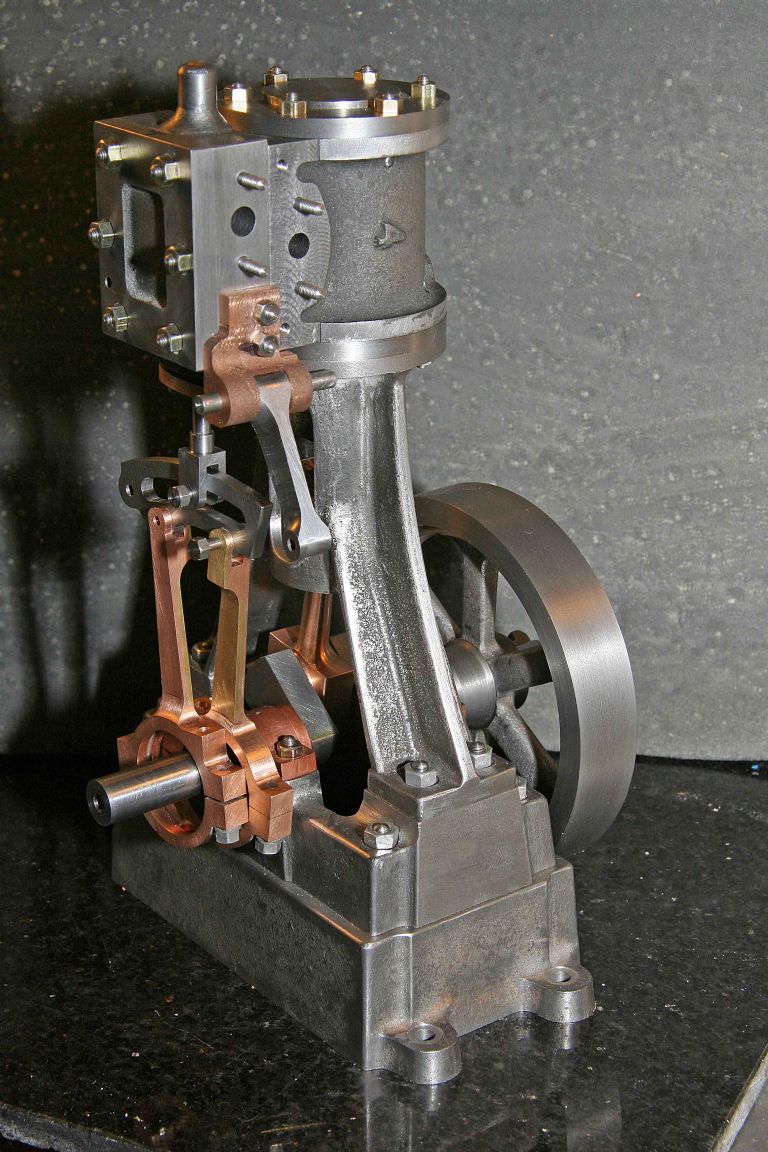You don’t have to be that accurate. Don Ashtons book says that the lead of a launch link engine is typically between 21?? and 27 deg. And if you are a bit out, you can restore the timing by shaving a bit of lap off. (or adding a bit) Not ideal, but it will still run fine. On my traction engine I had too much lead even though I set (keyed as per drawing) the eccentrics very accurately to 21 deg of advance. I could have shimmed the rods, but it was easier in the installation to alter the valve. Wicked lazy I know, but it runs perfectly. – so well that it will just tick over under no load on the tiniest leak through the regulator (if you put it in gear). Critcise the regulator if you will, but the rest is pretty good!.
So if you know what the lead is, its more important to get it the same forwards and reverse than actually to a given amount, though perfect is best of course.
I did a Stuart Launch engine and I am assuming these are the same type with both eccentrics and the boss all cast as one unit? Marked the crank bore on the casting and bored/reamed that.. Marked the first eccentric centre. Put the thing in a dividing head and rotated the assy to the right offset to mark the second eccentric centre. Now you have 2 pop marks to dividing head accuracy one in each eccentric, its a simple 4 jaw job, settiing the 2 popmarks true in turn using the normal 2 centre technique with the assembly mounted and locked on a dummy crank.
If you don’t have a dividing head, then draw the angle 4x full size with a protractor and shrink it in a scanner. That’ll come out pretty accurate, and one can mark out from that.
PITA of a design. If you get bored with it, just make the 2 eccentrics separately, and set fwd and reverse independently to zero lead in full gear by moving the eccentrics as normal. Unless you intend to cross the rods when a smidgen of lead might be useful, since it will reduce towards mid gear. Thats what I shall do with the next TE. Not cross the rods of course, but set the valves by rotating the eccentrics – because there is a far better chance of getting better valve setting, and you can eliminate to a degree errors introcuced by small dimensional inaccuracies.(perfect being better!)
John Olsen.






